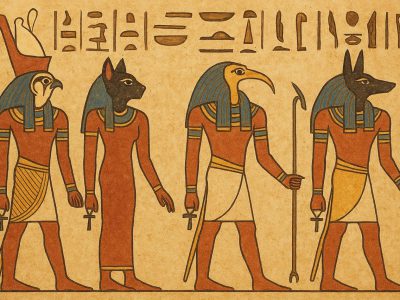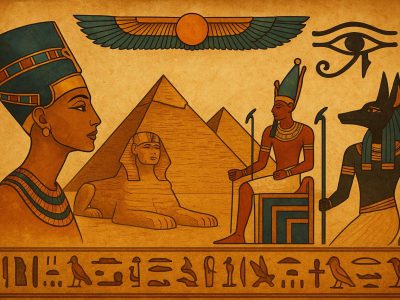The training course is titled “Hieroglyphics – The Sacred Writing and How to Read the Most Important Royal Cartouches, Formulas, and Structures.” The course aims to familiarize students with ancient Egyptian writing in general and hieroglyphics in particular, and to learn how to read Unilateral signs, Biliteral, and Triliteral signs. The course also aims to familiarize students with the most important royal cartouches, their meanings, and how to read them. Students will also learn the most important formulas and structures found on temple walls and various artefacts, and the most important rules of the Ancient Egyptian Language. At the end of the course, students will be trained on how to read all of the above on artefacts from various archeological sites and museums.
By the end of the course , the learner will be able to:
- Differentiate the types of ancient Egyptian Writing.
- Understand how to read single-, double-, and triple-vowel signs.
- Read the most important royal cartouches and royal titles and their meanings.
- Read the most important formulas and structures.
- Read numbers and abbreviations.
- Read any text on a tablet, coffin, or any other artifact.
Course Features
- Lectures 10
- Quiz 0
- Duration 1680:00:00
- Course Duration 01:33:00
- Skill level All levels
- Language Arabic
- Students 0
- Assessments Yes
Curriculumm
- 5 Sections
- 10 Lessons
- 10 Weeks
- Module 1: The Origins of Writing in Ancient Egypt2
- Module 2: Royal Titles and Key Traditional Formulas in Ancient Egyptian Scenes and Texts2
- Module 4: Practical Application4
- Module 3: Verbs and Nouns in the Ancient Egyptian Language2
- ReferencesReferences A. Arabic عبد الحليم نور الدين: اللغة المصرية القديمة، الطبعة الثالثة، 2002. B. Florien 1- Allen, J.P., Colloquial Middle Egyptian: some observation on the language of Heka Naskht, 1994. 2- Allen, J.P., The Ancient Egyptian Language, An Historical Study, 2013. 3- Bakir, A.M., An Introduction to study of the Egyptian Language. Middle Egyptian, Cairo, 1987. 4- Binick, R.I., Time and the verb: A guide to tense and aspect, New York, Oxford, 1991. 5- Cerny, J. & Groll, S.I., A Late Egyptian Grammar, Rome, 1975. 6- Depuydt, L., A history of research on the prospective Sdm.f forms in Middle Egyptian, JARCE 30, 1993, p. 11-31. 7- Doret, E., The narrative verbal system of Old and Middle Egyptian, Geneve, 1986. 8- Faulkner, R.O., A concise dictionary of Middle Egyptian, Oxford, 1962. 9- Gardiner, A.H., Egyptian Grammar: introduction to study of Hieroglyphs, Oxford, London, 1957. 10- Gunn, B., A negative word in Old Egyptian, JEA 34, 1984, p.27-30. 11- Helck., W., Historisch-biographische Texte der 2. Zwischenzeit und Neue Texte der 18 Daynastie, Wiesbaden, 1983. 12- Leprieno, A., Ancient Egyptian: a linguistic introduction, Cambridge, 1995. 13- Thacker, T.W., The relationship of the Semitic and Egyptian verbal systems, Oxford, 1954.0
Target audiences
- Tour guides
- Master's and PHD degree holders in the same field.
- Those who are passionate about learning and reading the ancient Egyptian language.
- Students in various departments as well as private and public universities.
Leave A Reply
You must be logged in to post a comment.






2 Comments
امتي المواعيد يا فندم ؟
رقمي ٠١٠٠٧٢٢٥٨٦٦ للتواصل تليفونيا إذا ممكن
الدورة متاحة حاليا